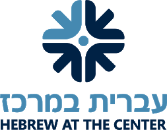Kindergartners Create and Perform at the South Campus Community Theater
June 2, 2017 by
Kindergarten students engaged in an in-depth, multi-disciplinary project to create a South Campus Community Theater. Throughout, they honed skills including research, writing, design thinking, math, science, art, and design, along with deepening their knowledge of Jewish holidays. The students’ work was guided by the theme of community as they explored essential and guiding questions like, “How does theater give us a voice and promote dialogue in our community?”, “How can theater be the vehicle to help us represent our community?, and “How can we learn more about our community by studying theater?” The semester-long project culminated in the physical construction of the South Campus Community Theater by the children, and in three separate productions. The plays debuted at the Kindergarten Bayit Patuach (Open House) when the students performed the plays they had scripted with energy and joy.
In order to gain background knowledge about theaters, the children learned from a variety of experts. These experts included JPDS-NC parent Sarah Gershman, one of the JPDS-NC Lion King musical directors; a puppeteer; JPDS-NC parent, Zac Borovay, a Broadway projector designer; and Melissa Davis, a former High School theater teacher, who taught the students about different types of stages. The children also went on field trips to the National Theater and to Highwood Theater. They saw different kinds of stages and costume areas, looked at various types of curtains, lighting and sets, and learned how each theater operates in order to put on a show.
The children then used the Design Thinking Process to build and create a South Campus Community Theater. Each class began by interviewing users of the Kikar in order to empathize with and understand the needs of the community. Next, each class defined the characteristics of each part of the theater they would create. Gan Anavim worked on the curtain, Gan Rimonim constructed the stage, and Gan Tmarim made the costume closet. Each class had an ideate session where children and teachers brainstormed all of the possible solutions to the problem they defined. The children constructed prototypes to represent their ideas individually and in small groups. This process helped the students finalize their designs and work with the adults in the community to build the final stage, curtains, and costume closet.
Through the experience of constructing prototypes, the children tinkered with materials to test their ideas of how to design functional curtains, a costume closet, and a stage. This process of prototyping and experimenting helped the children understand the intricacies of their designs and ways they could improve their plans.
Through the different Foundations classes children engaged in projects across the disciplines. In the Sadnah (art studio), the children collaborated in mixed groups from all three classes to draft sketches of backdrops and transfer these images onto canvases. The children were then challenged to create three dimensional representations of flats (set pieces) using various materials. These skills came in handy during Project Work as each child created their own costume for the play.
In Science, the children learned about simple machines such as pulleys, which theaters often use to open and close their curtains. After experimenting with various strategies, the Kindergartners decided to use a different kind of curtain for the theater, but to use pulleys to fly their props across the stage. At the same time, the students used foundational math skills involving 3D shapes, coins, and measurement to design and create a concession area for the theater.
In Language Arts, the children learned about biographies and wrote biographies for themselves in the third person to include in the theater’s Playbill. These skills were reinforced during Project work as each class wrote the script for their plays. Then in Mischak (play) the students practiced their acting and explored how it felt to take on the perspective of many different characters as they reenacted chagim (holidays) and Bible stories.
After months of researching, designing, writing, and building, each Kindergarten class staged their original class play that they debuted for the parents at our Kindergarten Bayit Patuach (Open House). The children shared their voice by basing their scripts on a message or value they wanted to share with the parents. Along with enjoying the play, the highlights of the Bayit Patuach included reserving tickets from South Campus Community Theater’s website, an autograph session with headshot photographs of each actor and crew member, a red carpet photo opportunity with a step and repeat backdrop, and displays showcasing this semester’s work.
We are so proud of our students for undertaking this creative and exciting project.






